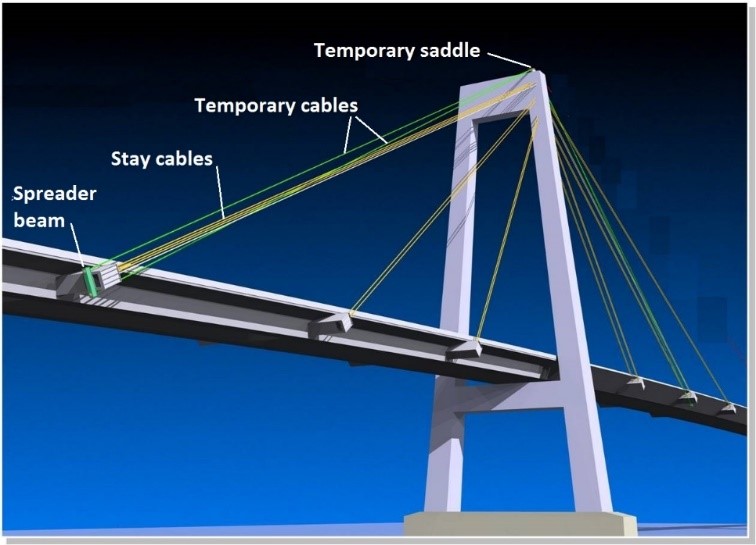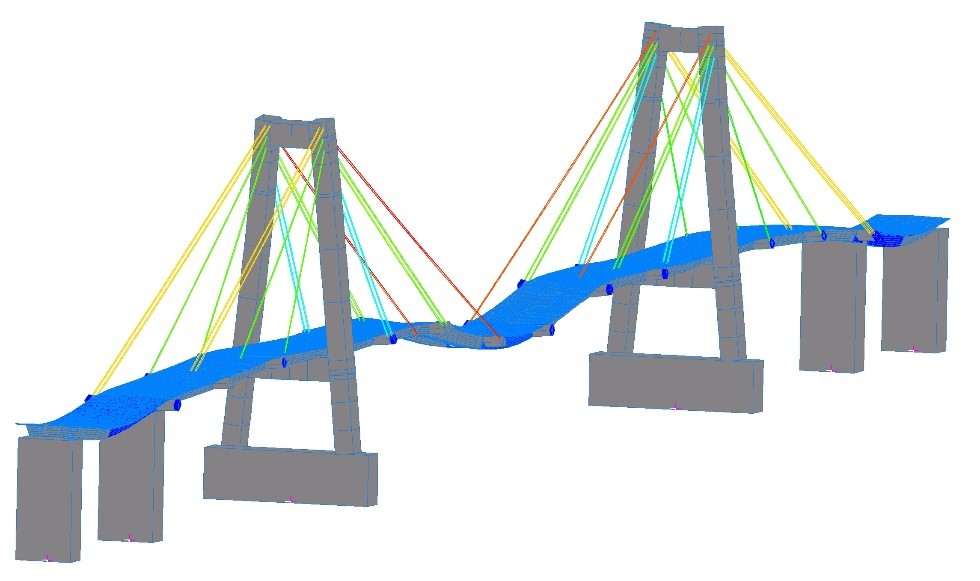InTrans / Apr 11, 2017
Can’t stop the traffic!
Go! Magazine

posted on April 11, 2017
We’ve all experienced traffic jams and slow downs in road construction zones, and we all hate it. They waste our time, create a bigger carbon footprint, and cause safety concerns both for the workers as well as the drivers.
This becomes an even bigger issue if the work is on a bridge. That’s because bridges are normally built to cross over a natural barrier—like a river or cliff—or to avoid major traffic crossings. In both cases, if the bridge is closed, drivers may need to travel tens of miles out of their way to find another crossing. Sometimes traffic interruptions are just plain unavoidable. But, with good planning and smart solutions, you can avoid them all together (or at least reduce them). Let’s find out how.
“ABC’s” of smart building
Ask the question: During bridge construction work, how can we “not stop the traffic?” Or, at least, how can we limit those traffic jams. Accelerated bridge construction (ABC) is the key. This approach has been proven to reduce on-site construction time and the negative impact that bridge construction and restoration projects have on the natural flow of traffic on commonly traveled routes. Closing or limiting the traffic for a bridge that has been used for a long time can make travelers very angry. Long construction times are no good for anyone, and it costs a lot. Think about it, it costs more time (for travelers), raises the frequency of accidents, and even causes an increase in pollution from idling cars.
Hale Boggs Bridge in Luling, Louisiana
Let’s look at an ABC example. The Hale Boggs Bridge, which extends over the Mississippi River, is a cable-stayed bridge, which means that its “deck” is supported by a series of fan-like cables that are connected to one or more towers.
In 2008, the time came to replace those cables. The Louisiana Department of Transportation wanted a system that would cause little or no interruption to traffic. Simply, they told us “We can’t stop the traffic.” This bridge is a critical part of a hurricane evacuation route, and traffic interruptions needed to be kept to a minimum. The stayed part of the Hale Boggs Bridge extends 2,225 ft., carries four lanes of traffic (two on each side), and is supported by a total of 72 cables.
The cables support the weight of the bridge and the cars on it. So, replacing the cables without interrupting traffic was a tough thing to ask. How tough? Imagine it like this: You are being asked to sit on a chair, pull your chair out from under you while you are still sitting, and then put a new chair under you without ever standing up. It took some real brain power, but the method developed for this project did just that.
Using ABC, most of the cable replacement operation was carried out within a 12 ft. space, separated on the right side of the bridge deck by concrete barriers. This allowed for all lanes of traffic to remain open, especially during peak traffic hours.
But how, you may ask? Remember the chair puzzle. Imagine if two of your friends lifted you slightly on both sides and then a third person pulled the chair out and put back a new chair while you were suspended in the air. Then you could be slowly lowered onto the new chair. This is very similar to the process designed for replacing the cables on the Hale Boggs Bridge.
For replacement of each cable, two temporary cables were designed that held the bridge deck up on each side of a group of old cables. That way the old cables could be cut one-by-one, removed, and new cables installed safely.


In that way, the bridge has both the space and capacity to allow for normal traffic to cross it. It is a creative yet simple solution. Of course, there was also a lot of analysis and design work required too, including using computer-generated models.

The entire replacement operation was designed to be quick and efficient, just like the Louisiana Department of Transportation wanted. At its peak, one cable was replaced in only a week, thanks to this unique and efficient methodology. This project was fully completed in 2012.
Related links
Check out the ABC-UTC homepage: http://www.abc-utc.fiu.edu/
See the Federal Highway Administration initiative to promote ABC (scroll to bottom of page for videos, photos, and more): http://www.fhwa.dot.gov/everydaycounts/edctwo/2012/abc.cfm
By Armin Mehrabi, Florida International University